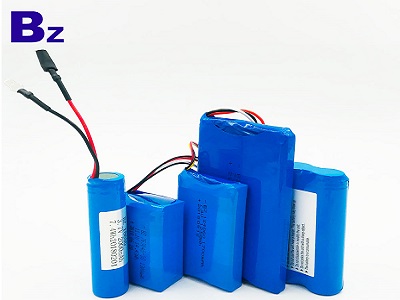Researchers at the Toyohashi University of Technology have successfully fabricated a binder-less tin phosphide (Sn4P3)/carbon (C) composite film electrode for lithium-ion batteries via aerosol deposition. The Sn4P3/C particles were directly solidified on a metal substrate via impact consolidation, without applying a binder. Charging and discharging cycling stabilities were improved by both complexed carbon and controlled electrical potential window for lithium extraction. This finding could help realize advanced lithium-ion batteries of higher capacity.

Lithium-ion (Li-ion) batteries are widely used as a power source in portable electronic devices. They have recently attracted considerable attention because of their potential to be employed in large-scale as a power source for electric vehicles and plugin hybrid electric vehicles and as stationary energy storage systems for renewable energy. To realize advanced Li-ion batteries with higher energy density, anode materials with higher capacity are required. Although a few Li alloys such as Li-Si and Li-Sn, whose theoretical capacity is much higher than that of graphite (theoretical gravimetric capacity = 372 mAh/g), have been extensively studied, they generally result in poor cycling stability due to the large variation in volume during charging and discharging reactions.
Tin phosphide (Sn4P3) (theoretical gravimetric capacity = 1255 mAh/g) with layered structure, generally used as a high-capacity alloy-based anode material for Li-ion batteries, has an averaged operation potential of ?0.5 V vs. Li/Li+. Reports indicate that complexing carbon materials with nano-structured Sn4P3 particles significantly enhance the cycling stability. Generally, electrodes used in batteries are fabricated by coating a slurry comprising electrode active materials, conductive carbon additives, and binders on metallic foils. For carbon complexed Sn4P3 (Sn4P3/C) anodes (such as those reported in the literature), the weight fraction of the active materials in an electrode is decreased by approximately 60?70 % because of the use of significant quantities of conductive additives and binders to achieve stable cycling. Consequently, the gravimetric specific capacity per electrode weight (including those of conductive carbon additives and binders) is decreased significantly.
Researchers at the Department of Electrical and Electronic Information Engineering, Toyohashi University of Technology, have successfully fabricated a binder-less Sn4P3/C composite film electrode for Li-ion battery anodes via aerosol deposition (AD). In this process, the Sn4P3 particles are complexed with acetylene black using simple ball-milling method; the obtained Sn4P3/C particles are then directly solidified on a metal substrate via impact consolidation without adding any other conductive additives or binders. This method enables enhancement of the fraction of Sn4P3 in the composite to above 80%. Furthermore, structural change of the composite electrode is reduced and cycling stability is improved for both complexed carbon and controlled electrical potential window for lithium extraction reaction. The Sn4P3/C composite film fabricated by the AD process maintains gravimetric capacities of approximately 730 mAh g-1, 500 mAh g-1, and 400 mAh g-1 at 100th, 200th, and 400th cycles, respectively.
The first author Toki Moritaka is quoted as saying, "Although optimizing the deposition conditions was difficult, useful information on enhancement of cycling stability of the Sn4P3/C composite film electrode fabricated by the AD process was obtained. The complexed carbon functions not only as a buffer to suppress the collapse of electrodes caused by the large variation in volume of Sn4P3, but also as an electronic conduction path among the atomized active material particles in the composite."
"This process is an effective means to increase the capacity value per electrode weight. We believe there is scope for improvement of the electrochemical performance by the size and content of the carbon in Sn4P3/C used in composite film fabrication by the AD process. We are now trying to optimize the complexed carbon content and increase the composite film thickness," quotes Associate Professor Ryoji Inada.
The findings of this study may contribute to the realization of advanced Li-ion batteries of higher capacity. Moreover, because not only Li but Na can also be stored in and extracted from Sn4P3 by similar alloying and dealloying reactions, the Sn4P3 electrode can be employed in next-generation Na-ion batteries at much lower costs.



